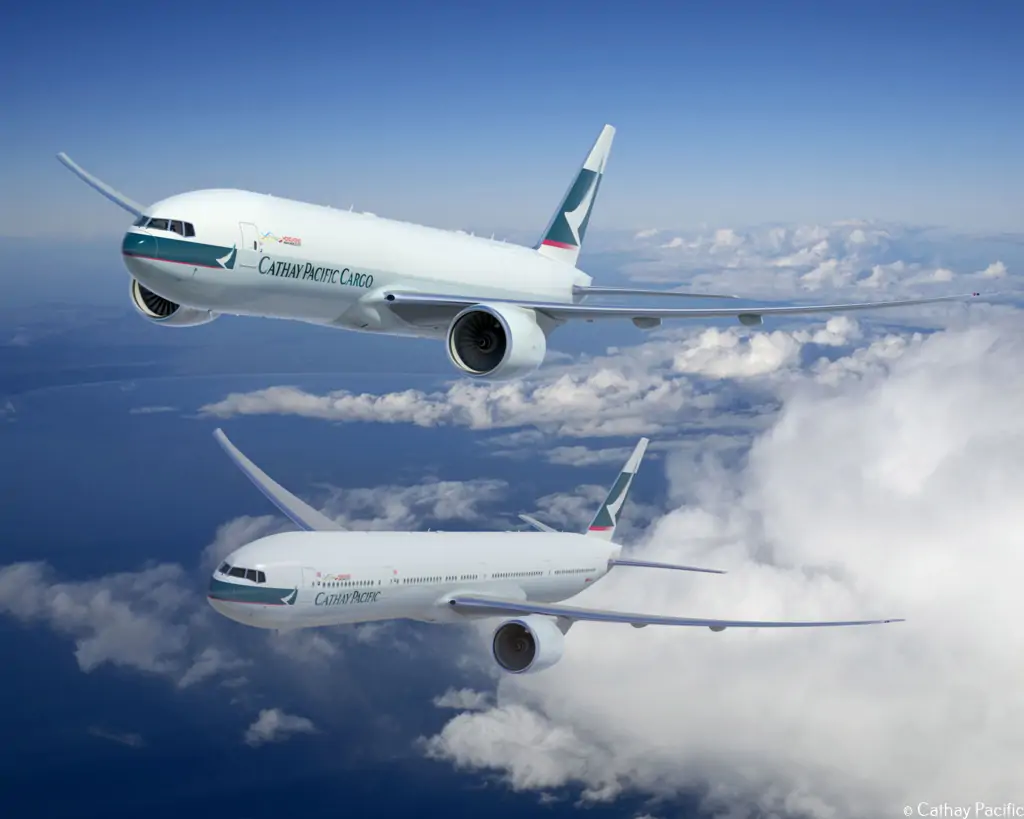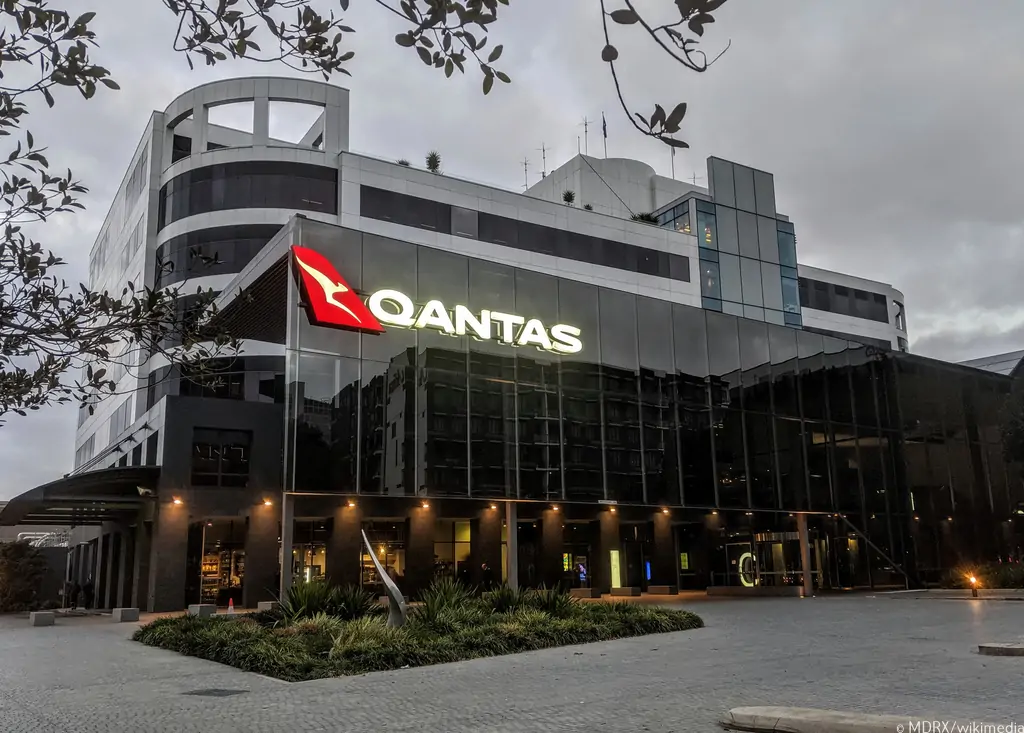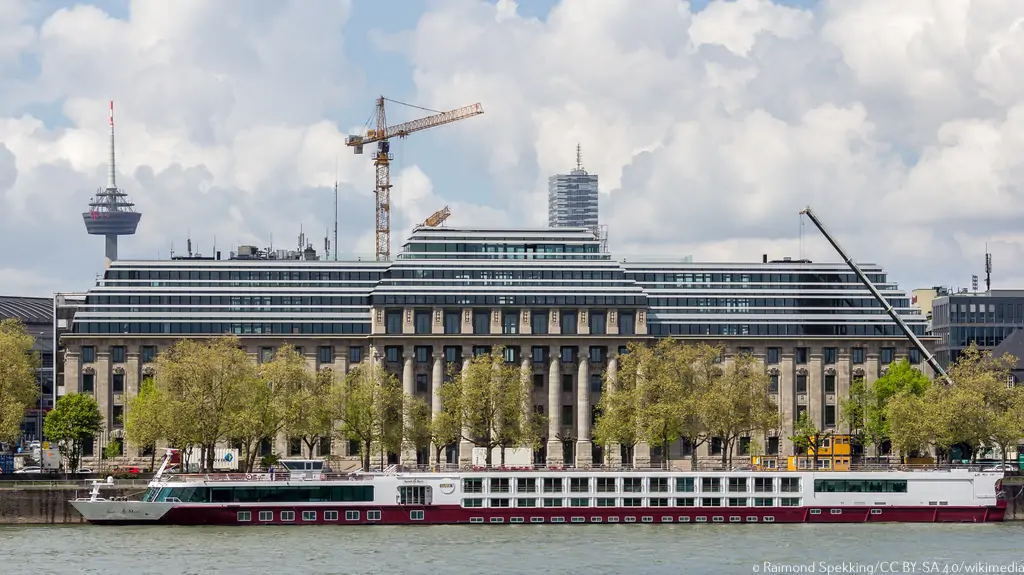Climate change is a pressing global issue that demands cross-industry collaboration. Recognizing the need to actively contribute to environmental sustainability, the Qantas Group established the Qantas Climate Fund. This fund will provide critical assistance to initiatives and technologies that reduce emissions and help the Group meet its ambitious ecological targets.
The Qantas Climate Fund: An Overview
The Qantas Group, one of the world's premier airlines, has announced the foundation of the Qantas Climate Fund, a significant step towards combating climate change. This ground-breaking initiative, announced at the Group's Investor Strategy Day, aims to allocate AUD$400 million in direct investments in sustainability initiatives and technological advances. The Qantas Climate Fund, the world's largest aviation fund of its type, illustrates the airline's commitment to minimizing emissions while fostering a sustainable future.
Addressing Emissions Reduction Targets
The Vitality of Sustainability Projects and Technologies
To prevent the negative consequences of climate change, it is critical to adopt sustainability programmes and technology across all industries. The aviation sector, which accounts for a large amount of greenhouse gas emissions, must actively seek carbon-reduction methods. The Qantas Climate Fund recognizes this need and works to sponsor efforts that reduce emissions.
The Importance of Direct Investments
Qantas emphasizes the value of proactive engagement in sustainability programmes by establishing a climate fund dedicated to direct investments. Direct investments offer the resources required for the development and implementation of cutting-edge technology, allowing the aviation sector to move towards a more sustainable future. The Qantas Climate Fund is a real move taken by the airline to assist and expedite the implementation of these solutions.
The Qantas-Airbus Partnership
Accelerating the Sustainable Aviation Fuel Industry
Qantas formed a historic agreement with Airbus in 2022, spending AUD$290 million to accelerate the formation of a domestic sustainable aviation fuel (SAF) industry in Australia. This alliance intends to revolutionize aviation fuel manufacturing by concentrating on environmentally friendly options that dramatically minimize emissions. The Qantas Climate Fund will continue to support this collaboration, helping to foster growth in the SAF industry and ensure a sustainable supply chain.
Domestic Impact and Global Leadership
The partnership between Qantas and Airbus helps not only the domestic aviation sector but also positions Australia as a worldwide leader in sustainable aviation. By investing in local SAF manufacturing, the alliance helps to create jobs, promote technology, and lower Australia's carbon footprint. This joint endeavor exemplifies the Qantas Group's commitment to environmental leadership and serves as an example for the global aviation sector.
Calling for a Sustainable Aviation Fuel Mandate
SAF is the most important technique now available to airlines for reducing emissions, especially because it can be employed in today's engines and fuel supply infrastructure with no changes.
Additional Environmental Initiatives
Aside from the collaboration with Airbus, the Qantas Climate Fund will invest AUD$110 million in other environmental projects. These programmes address multiple facets of sustainability and attempt to influence change within the aviation industry. Among the prominent efforts are:
High-Integrity Carbon Offsets
The Qantas Climate Fund will invest in high-integrity carbon offset initiatives to offset unavoidable emissions. These programmes follow tight regulations and guidelines to ensure that emissions are properly balanced by activities including reforestation, renewable energy initiatives, and sustainable land management practices. The fund's support for high-integrity carbon offsets reflects its dedication to genuine mitigation of emissions.
Offshore Sustainable Aviation Fuel Investments
The Qantas Climate Fund will invest in offshore sustainable aviation fuel projects to help accelerate the global transition to sustainable aviation. Qantas hopes to accelerate the global adoption of sustainable fuel alternatives by providing monetary assistance for international initiatives. This investment will fuel technical improvements and help make the aviation sector more sustainable across the world.
Operational Efficiency Technologies
In the aviation industry, operational efficiency is a major component of minimizing emissions. The Qantas Climate Fund will invest in the research and deployment of operational efficiency technology. These technologies include a variety of breakthroughs, such as enhanced aircraft systems, optimized flight planning, and enhancements to ground operations. Qantas seeks to mitigate its environmental impact and increase sustainability by prioritizing operational efficiency.
Thoughts
As part of the airline's 2023 Investor Day, Qantas Group Chief Sustainability Officer Andrew Parker announced the increased sustainability investment.
Conclusion
The Qantas Climate Fund demonstrates the Qantas Group's commitment to environmental sustainability. This ground-breaking fund will support sustainability initiatives and technology with a substantial investment of AUD$400 million, establishing Qantas as a worldwide leader in the battle against climate change. Qantas aspires to meet its emissions reduction objectives while also supporting a cleaner aviation sector by committing resources to the development and implementation of new solutions.
With Inputs from Qantas
Read next
Boeing is working on a deal to sell at least 150 737 Max jetliners to Saudi Arabian startup Riyadh Air, Bloomberg News reported. The new carrier, wholly owned by Saudi Arabia's Public Investment Fund (PIF), is looking for about 300 to 400 single-aisle jets in total, the report said, citing people familiar with the matter. Airbus SE could also claim a part of the order, the report added.
Boeing declined to comment, while Riyadh Air and PIF did not immediately respond to Reuters requests for comment. Boeing previously won another order from state-owned airline Saudia and Riyadh Air for a combined 78 Boeing 787 Dreamliners, the fifth-largest commercial order by value in the plane maker's history.
Owned by Saudi Arabia's Public Investment Fund (PIF), Riyadh Air said it will purchase 39 highly efficient 787-9s, with options for an additional 33 787-9s. Based in the capital city, Riyadh Air will play a key role in growing Saudi Arabia's air transport network. The Dreamliner aircraft will be equipped with General Electric’s GEnex engines. This is Boeing's fifth biggest order historically after a massive order by Air India last month.
The first deliveries of the widebody aircraft are scheduled for early 2025. Riyadh Air will be a digitally-led full-service airline with a commitment to sustainability reflecting Saudi Arabia’s transformative projects under Vision 2030. It will operate in line with the country’s strides toward net zero emissions.
Riyadh Air is wholly owned by Saudi Arabia's sovereign wealth fund, the Public Investment Fund (PIF), which has more than USD 600 billion in assets and is the main driver of the kingdom's efforts to wean itself off oil. The airline will serve more than 100 destinations around the world by 2030 and will directly compete against Emirates and Qatar Airways.
Riyadh Air hired Tony Douglas, the former Chief Executive Officer (CEO) of Etihad Airways, to lead the company. Other notable hires include Peter Bellew, the airline’s Chief Operating Officer (COO) who has previously worked at Ryanair and easyJet, as well as Malaysia Airlines, and Vincent Coste, the new Chief Commercial Officer (CCO), who worked as the CCO at Kenya Airways and Gulf Air.
(With Inputs from Bloomberg)
Read next
Cathay Pacific Close to Order Boeing 777-8 Freighters for Partial Cargo Fleet Renewal
Radhika Bansal
30 May 2023

Cathay Pacific Airways Ltd is close to placing an order worth around USD 2 billion for Boeing 777-8F freighters as the Hong Kong carrier embarks on the partial renewal of a fleet of dedicated 747 cargo jets. The selection follows a hard-fought battle for the business of one of the world's top-five freight airlines, which had been comparing the all-freight version of the future Boeing 777X jet family with an upcoming cargo model of the existing Airbus A350.
According to Reuters, Industry sources have said the competition involved an initial purchase of around half a dozen aircraft worth USD 2 billion at list prices before traditional airline discounts. Cathay Pacific currently is home to six ageing 747-400F, with an average age of 15 years; this is in addition to another 14 747-800F, which have up to ten years under their belt.
Cathay Pacific said it had no immediate announcement to make. "We continue to invest in and grow our fleet with the addition of new, state-of-the-art and fuel-efficient aircraft," a Cathay spokesperson said by email. "We have no specific updates or announcements regarding the fleet at this time.”
Boeing and Airbus declined to comment on commercial discussions. Boeing launched the 777-8F freighter with an order from Qatar Airways in January 2022, six months after Airbus launched the development of the A350 Freighter in a bid to weaken its U.S. rival's traditional grip on the market for freighters.
Cathay Pacific told analysts last November it was looking at more freighter capacity and working "actively" with planemakers to acquire some of the new freighters coming up after 2025.
Situated at the heart of pre-pandemic trade lanes, Cathay's decision on where to place bets for the next phase of its cargo development is seen as a key test for the two freighters because the airline operates underlying 777 and A350 passenger models.
Cathay Pacific is the world's fifth-largest air freight carrier and the third-largest traditional freight airline behind Qatar Airways and Emirates when specialist expresses parcel carriers FedEx and UPS are excluded, according to the latest available data from the International Air Transport Association.
Cathay Pacific's Current Fleet & Orders
Cathay Pacific currently operates a fleet of 186 aircraft, with 91 currently active. The fleet includes a variety of Airbus models such as A320ceos, A321ceos, A321NXs, A330-300s, A350-1000s, and A350-900s. The airline also operates Boeing aircraft, including Boeing 777-300s, 777-300ERs, a cargo fleet of 14 747-8Fs, and six 747-400ERF freighters.
Furthermore, Cathay Pacific has pending orders for 21 Boeing 777-9s, five Airbus A350s, and ten A321NXs. The average age of the fleet is 11.5 years, with A330s being the oldest at 15.5 years, followed by A320/321ceos at 18 years, and 777-300s at 21 years.
In March 2023, Cathay Pacific experienced a remarkable 25.3% growth in cargo volumes compared to the same period in the previous year. This expansion can be attributed to the relaxation of pandemic-related aircrew quarantine measures, which had significantly impacted cargo capacity.
Cathay Pacific has 21 Boeing 777-9 jetliners on order, worth over USD 7 billion at list prices, with deliveries initially slated to begin in 2021 and stream through to 2024. However, a series of production delays to Boeing’s 777X program (which covers the large 777-9 and the smaller but longer-range 777-8) has pushed back the 777-9’s debut to 2024, to the ongoing annoyance of many airlines.
Faced with a longer wait than expected, and combined with the economic impact of Covid-19 and Hong Kong’s extended border closure, Cathay Pacific Group Chairman Patrick Healy announced in October 2020 “the delivery of the 777-9 fleet has been postponed beyond 2025”.
(With Inputs from Reuters)
Read next
The European Union Aviation Safety Agency (EASA) is a regulatory organization in charge of guaranteeing the highest levels of aviation safety throughout the European Union (EU). It works closely with aircraft manufacturers like Airbus to identify and resolve any safety risks. EASA recently published an Airworthiness Directive (AD) addressing a specific issue with Airbus A320 series aircraft.
The Problem's History
Fuel tanks in aircraft are meticulously engineered to exclude any potential sources of ignition. However, unanticipated complications do develop from time to time, necessitating an investigation and corrective action. In this example, numerous failures of the type 8410 fuel pumps installed in Airbus A320 family aircraft prompted a deeper look.
EASA's Findings
The European Union Aviation Safety Agency (EASA) has published an Airworthiness Directive (AD) addressing a possible ignition source in all Airbus A320 family aircraft's fuel tanks. This directive is the result of several failures of type 8410 fuel pumps, notably those with the component number (P/N) 568-1-27202-005.
Impact on Safety
In the aviation sector, safety is of the utmost significance. Any possible threats to the safety of passengers, crew, and aircraft must be addressed quickly and properly. The implications of in-tank igniting can be severe, jeopardising the aircraft's structural integrity and system operation.
Operator’s Response
To solve the problem, airlines operating the Airbus A320 series will need to check pump B. According to Airbus Alert Operator Transmission (AOT) A28N010-22-00R1, Group 1 aircraft (A319s and A320s lacking the A321's centre fuel transfer system, as well as all A318s) require a check of pump B in the centre fuel tank at positions FIN 37QA and 38QA.
Communication and Collaboration
The investigation and resolution of aviation safety concerns require a high degree of teamwork and communication. EASA, for example, collaborates closely with aircraft manufacturers to identify possible hazards and create suitable solutions. The industry can improve aviation safety by sharing knowledge, insights, and best practices.
Conclusion
The European Union Aviation Safety Agency's Airworthiness Directive on the possible ignition source in the fuel tanks of Airbus A320 family aircraft emphasizes the agency’s commitment to aviation safety. By properly studying the issue and acting quickly, EASA hopes to avoid in-tank igniting accidents that might jeopardize the structural and system integrity of the aircraft.
With Inputs from AeroTime
Read next
As the regulatory body in charge of safeguarding the safety of civil aviation in the United States, the FAA releases airworthiness directives on a regular basis to address possible safety hazards in aircraft. These guidelines are critical for ensuring the safety of many aircraft models, notably the widely used Boeing 777.
Federal Aviation Administration (FAA) Overview
The Federal Aviation Administration, a section of the United States Department of Transportation, is in charge of civil aviation regulation and control in the United States. The FAA's principal goal is to assure the national airspace system's safety and efficiency. The FAA establishes and enforces strict standards to ensure aircraft airworthiness and passenger safety through significant study, legislation, and inspections.
The Importance of the Boeing 777 in the Aviation Industry
The Boeing 777 is a well-known commercial aircraft known for its dependability, efficiency, and long-range capabilities. It has acquired great acceptance among airlines worldwide, allowing them to perform long-distance flights while giving customers a comfortable experience. The Boeing 777's safety and reliability have been critical elements in its success, making it a preferred choice for many airline operators.
Understanding Horizontal Stabilizers and Their Importance
The horizontal stabilizer, positioned near the tail portion of an aircraft, is an important component of the empennage. It is critical for maintaining the aircraft's stability and balance while in flight. The horizontal stabiliser aids in the management of the airplane's pitch, or nose-up/nose-down movement. The horizontal stabilizer must perform properly for safe and controlled flight operations.
The Cracking Issue in the STA 2370 Pivot Bulkhead Forward Outer Chord
The Federal Aviation Administration (FAA) has issued a critical airworthiness regulation to ensure the safety of Boeing 777 aircraft. This guideline, which is slated to go into effect on June 30th, requires all airline operators to undergo examinations on their 777s to detect and treat any cracking concerns that might result in the loss of the aircraft's horizontal stabilizer.
The Boeing 777 Airworthiness Directive Issued by the FAA
Recognizing the urgency of resolving the cracking issue as soon as possible, the FAA issued an airworthiness regulation for the Boeing 777. All airline operators operating Boeing 777 aircraft must undertake rigorous inspections to detect any cracking in the STA 2370 pivot bulkhead front outer chord. The FAA's proactive strategy attempts to reduce the probability of a catastrophic horizontal stabilizer breakdown and assure the aircraft's ongoing safe operation.
Impact on Passenger Safety and Airline Operations
The introduction of the airworthiness directive will undoubtedly have an impact on airline operations, perhaps causing temporary interruptions as inspections and essential repairs are completed. These precautions, however, are necessary to guarantee the safety and integrity of the Boeing 777 fleet. Airlines prioritize passenger safety above all else, and the temporary inconveniences caused by these checks demonstrate their dedication to maintaining the highest safety standards.
When the operational inconvenience of having an aircraft out of service for the inspection is factored in, the impact quickly increases. Air France, for example, has stated that each aircraft may be grounded for up to three weeks while the repairs are carried out. The carrier further stated that the job would require specialized instruments that were not readily available.
Conclusion
The FAA's airworthiness directive for the Boeing 777 is a proactive move to assure the aircraft's safety and airworthiness. The directive intends to minimize horizontal stabilizer control loss and maintain aircraft controllability by addressing probable cracking in the STA 2370 pivot bulkhead forward outer chord. Measures are being taken to detect and minimize risks via collaborative efforts between Boeing, airlines, and regulatory authorities, confirming the aviation industry's commitment to passenger safety.
With Inputs from AeroTime
Read next
Louis Vuitton Showcases First Airport Lounge at Doha’s Hamas International Airport
Abhishek Nayar
30 May 2023

The renowned luxury brand Louis Vuitton has recently made a novel pronouncement that is bound to tantalize the taste buds of discerning travelers. In partnership with Qatar Duty Free, the brand introduced the Louis Vuitton Lounge by Yannick Alléno at Hamad International Airport in Doha. The collaboration between Louis Vuitton and Qatar Duty Free aims to elevate the benchmark for airport dining by combining exceptional cuisine with the essence of luxury.
Overview of the Louis Vuitton Lounge by Yannick Alléno
The Louis Vuitton Lounge by Yannick Alléno is designed to transform airport dining by providing travelers passing through Hamad International Airport with an exceptional culinary experience. This exclusive lounge provides a refuge of sophistication and indulgence in the midst of the hectic airport atmosphere, allowing guests to savor world-class cuisine prepared by Michelin-starred chef Yannick Alléno.
Elegant Ambiance and Design
When you step into the Louis Vuitton Lounge by Yannick Alléno, you are met with a room that exudes elegance and sophistication. The interior design for the lounge smoothly amalgamates the brand's iconic aesthetic with aspects that represent local culture. Every element has been carefully addressed, from the meticulously curated artworks to the plush furnishings, to create a sumptuous ambience that complements the culinary experience.
Seating is blended in with designer edition pieces from the Maison, such as India Mahdavi low tables, Paola Lenti high tables, and Martin Eisler's Costela armchairs. The Cosmic Table by Raw Edges and Bell Lamps by Edward Barber and Jay Osgerby are among the Objets Nomades, which are part of Studio Louis Vuitton's art de la table universe.
The Culinary Concept
The culinary concept of Yannick Alléno's Louis Vuitton Lounge revolves around merging traditional French techniques with innovative culinary ideas. Yannick Alléno's gastronomic enthusiasm and meticulous attention to detail ensure that every dish served is an intricate piece of art in terms of flavour and presentation. The menu showcases a harmonious blend of classic and contemporary cuisine, each made with the finest ingredients sourced around the world.
Unique Dining Experience
Dining at Yannick Alléno's Louis Vuitton Lounge is more than just a meal; it is an immersive, multi-sensory experience. The ambiance, impeccable service, and exquisite presentation of each dish all weave together to create a phenomenal culinary journey. This dining experience aims to captivate your senses while leaving a lasting impression, whether you are a seasoned gourmet or an adventurous traveller eager to indulge in a culinary adventure of a lifetime.
Conclusion
Louis Vuitton Lounge by Yannick Alléno represents a union of sophistication, gastronomy, and opulence. It showcases Louis Vuitton and Qatar Duty Free's commitment to providing travellers with exceptional experiences that exceed expectations. Every element, from the gourmet menu offerings to the opulent ambiance, has been meticulously designed to ensure a memorable dining experience. So, the next time you are at Hamad International Airport, indulge your senses and embark on a culinary journey unlike any other at the Louis Vuitton Lounge by Yannick Alléno.
With Inputs from Fashion Network






Comment